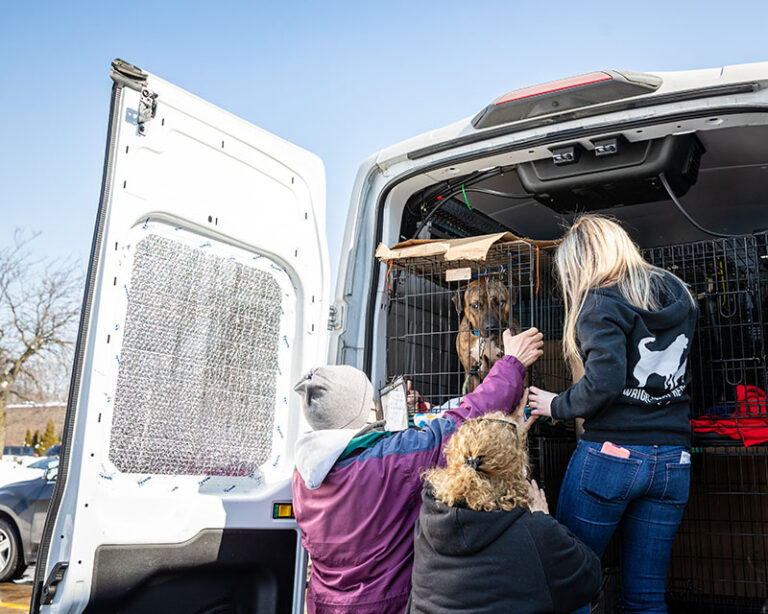We are so excited to highlight more of the Human Animal Support Services team this year, including who they are, what they do, and how their work can help you save lives and keep people and pets together!
For this very first installment, we’re speaking with National Shelter Support Director Jordana Moerbe—whose role is to work with any shelter in the country to “help them figure out what they need and how we help them.”
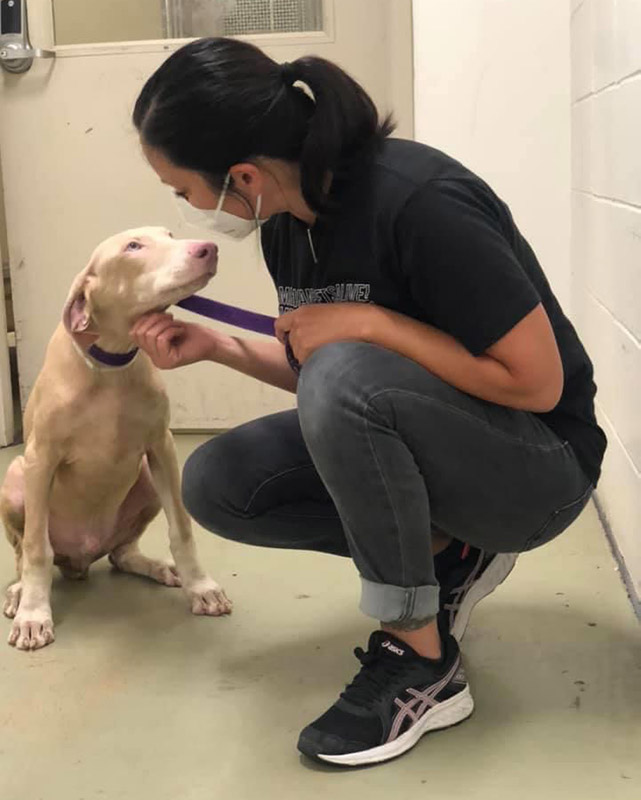
Jordana and the team she works with—Clare Callison, the Director of National Operations; and Shelter Support Advisor Mara Hartsell—do it all for free. That’s right, there’s no charge whatsoever.
“It’s incredibly rewarding,” Jordana says. “It’s really nice to be able to help not only the animals, but the people.”
What sorts of problems can this team help shelters solve? How does the process work? How do you reach out if you have questions or want some help at your organization? How did Jordana go from working at a car rental company to assisting shelters throughout Texas and nationwide?
Read ahead for answers—except let’s just start with the contact info for anyone who wants to confer with Jordana and the team: inquiries@americanpetsalive.org.
How do shelters find you? How do you determine which shelters you’ll be working with?
Jordana: We work with all types of organizations. Our internal focus is to help shelters that are in the highest need. They have no resources. They don’t have great funding, but our goal is to help any org needing support.
Anybody that reaches out to us, we’re definitely going to help them in some way, shape, or fashion.
We find partners through word of mouth, social media, or news articles. We see that a shelter is struggling. We see that they’re having a disease outbreak. We’ll reach out.
Sometimes, through current relationships, they’re reaching out to us. Some of the time we don’t have a relationship already, but they’re still finding us and reaching out to us.
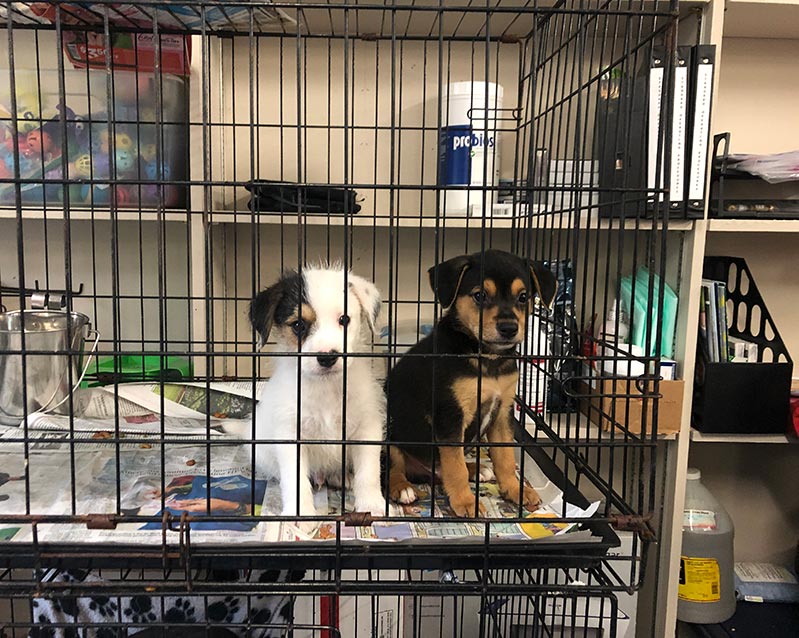
What sorts of sheltering needs are you helping with?
Jordana: We work on solving individual problems without creating or contributing to others. That could involve helping shelters streamline processes to get animals out the door into adoptive and foster homes. Improving rescue relationships. Getting adoptions up. Improving foster programs.
We also do a lot of work on managing illness and disease, especially when shelters are full. There is one shelter that’s not too far from us. They reached out because they were having a lot of trouble with kittens dying, and they weren’t sure what was going on. It’s a shelter that doesn’t have a vet on staff. They have limited resources.
We were able to do a site visit and look at the situation in person, see what was going on, how disease was being spread. We did some on-site testing and determined that they had feline panleukopenia, a highly contagious virus that most severely affects kittens.
From there we knew how to help them. We got some treatment for the panleuk. We transported a bunch of kittens to Austin Pets Alive! where they could be treated—HASS is a project of Austin Pets Alive!— and provided information on stopping the spread and preventing future outbreaks.
Then we helped them through the decontamination process; what needs to be sanitized and thrown out, what could be kept, so that they could start fresh and stop the spread of the virus.
It stopped their panleuk outbreak and they stopped having so many kittens and cats dying in care.
It’s incredibly rewarding. It’s really nice to be able to help not only the animals, but the people. Because it can be really deflating for staff. They come into work and there’s another four kittens that have passed. That’s hard on people.
It’s nice to be able to go in and help the pets, and also help the staff and make them feel like they are making a difference and can keep doing their work.
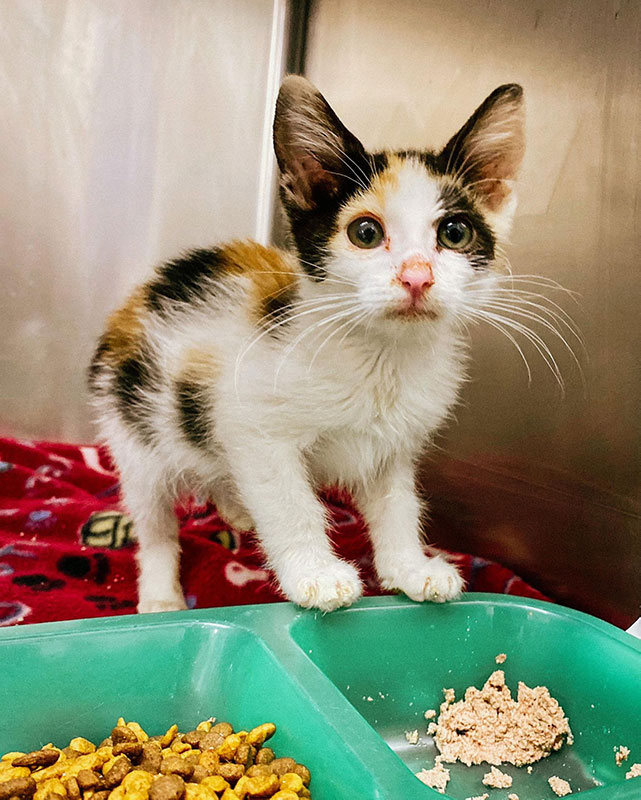
What are some other issues that you and your team have helped shelters with?
Jordana: Vaccinations on intake. We’ll talk to directors and they say, yes, we vaccinate on intake. But then when we get down in the shelter and start observing processes and talking to staff, it turns out they’re not vaccinating on intake.
It’s not because they’re being lazy or they’re being malicious, but because there are other process barriers in the way. And so, we are able to identify those barriers and help them so that they can start truly vaccinating on intake.
When we say vaccines on intake on every animal, we really mean it. If it comes in sick, it still needs a vaccine. If it comes in pregnant, it still needs a vaccine.
It starts with three animals that don’t get vaccinated on intake, for reasons that could be perceived as being good reasons. But then that expands. Then there’s 10, and then there’s 20, and then a few months down the road, there’s a lot of animals that aren’t getting vaccinated. That’s where outbreaks start.
There’s just hidden barriers and we can streamline those processes so that animals get vaccinated on intake.
Is there anything that people can’t call you about?
Jordana: Nope. Not really. Because if we don’t have the expertise, we’ll find someone who can help. If we can’t help the organization directly through our services, we will put them in touch with someone who can.
Do you help out on-site at shelters or mostly consult remotely?
Jordana: It’s a combination. It depends what the need is. If it’s something they just need some advice on, we can do that over the phone.
But if it’s something that we need to be on-site and we need to see the process, we need to see what’s going on, then we definitely can make a site visit. So it just depends on the need and how we think we can be most helpful.
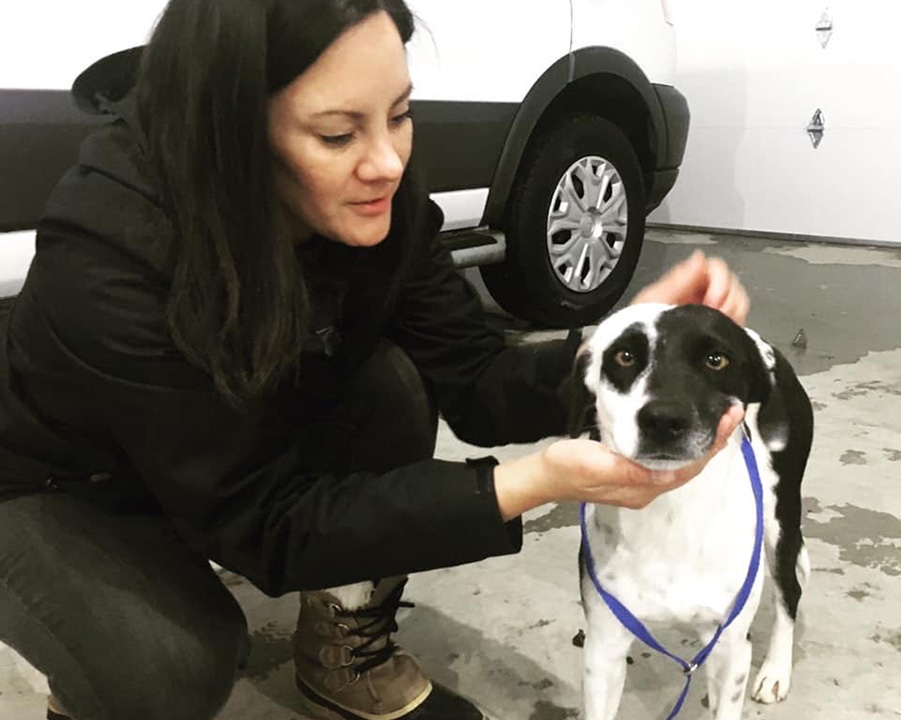
Do you have any general advice for shelters, based on common issues you’re seeing?
Jordana: Train new staff on how to identify disease so that they know what’s normal and what’s not normal. Even if they can’t say, “This looks like parvo,” they can say, “This is not normal,” and flag it so it goes to somebody, either a veterinarian or a vet tech or someone else with more information that can put eyes on it.
I would say that’s one, just teaching new staff, and current staff, what’s normal and what’s not normal, how to identify red flags, and what to do once you see it is so important.
If there’s a pathway to teach people how to identify these serious diseases or other unknowns, what to do afterwards, and then what do we do after that, it really helps prevent a lot of unnecessary panic. We need to put a process in place so that people don’t panic. They just have to say, “OK, now I do this step, and now I do this step.” So it just becomes a step-by-step process.
By email, Jordana also shared some tips for shelter leaders encountering a disease outbreak—in order to manage the moment of crisis, without exacerbating it:
- Be transparent with staff, volunteers, the community, and all other stakeholders.
- Don’t view a disease crisis through a medical lens only. Look at the entire picture/process.
- Avoid shutting down all outcome operations due to fear of liability.
- Facilitate collaboration among your teams.
- Learn from the experience and how it can strengthen your team.
And you’ll do this for free for a shelter that just wants some help?
Jordana: Absolutely. It’s what our expertise is in. What we pride ourselves on is, we’ve been there. We’ve been on the ground. We’ve done the work. And so, we’re not going to come in and give you unrealistic expectations or unrealistic steps to take. We will work with what you have.
Do you work on foster programs too?
Jordana: We definitely do. We can help build foster programs. We can help expand foster programs. We can help with SOPs, handbooks, barriers to foster programs. We can help. And if we can’t, again, we will put in touch with people who can.
Are you finding that most of the shelters you work with are pretty receptive to the strategies and guidance that you’re giving them?
Jordana: I would say yes, most people are definitely open to these ideas. It can still be hard. It’s a multi-step process, and sometimes it can take a really long time, and you need buy-in from a lot of people.
We don’t expect big changes overnight at every shelter. Sometimes we expect it might take a few years. But if we can start taking baby steps in the right direction, that’s how we have found changes most likely to happen, especially in the most difficult environments.
How did you get into this work?
Jordana: I totally fell into it. I was an operations manager for a car rental company. I hated it so I quit. I got a job at Emancipet, which is a low-cost veterinary clinic. I had zero experience, didn’t know what I was doing, but they hired me.
That was when Dr. Ellen Jefferson (who is now CEO and President of Austin Pets Alive!) was the director. I was just lucky enough that when she moved to Austin Pets Alive!, she needed a technician. The technician that she had with her was moving away because her husband was going to vet school.
It opened up a position, and I was lucky enough to get that position and have been working at APA! ever since. I’ve learned so much, and I’m forever thankful for every opportunity Dr. Jefferson has given me.
As a first-generation Hispanic person, animal welfare was not talked about growing up but we always had family dogs. To this day, it’s still new to my dad and it’s up to me to explain it to him, what I do and why.
In many ways we are learning together the complexities of this industry and the long path ahead as we try to understand how companion pets piece into our own personal lives, and how important they are to people.
This is a really hard moment in animal sheltering. How are you adapting your work to this moment?
Jordana: There is still a huge need for in-shelter work because, as we know, shelters are still full, and they’re still going to see disease, and they’re still going to need foster programs, and all those baseline programs.
But as we build the bridge with the work HASS does to keep people and pets together, we’re hoping we can help shelters in a whole new way.
Working in a shelter is hard, and it’s not always fun. But I think that part of it, helping people, it makes you feel good. Instead of someone surrendering their dog to us, watching them cry as they walk away—let’s give them what they need to keep their pet so they can walk out with their dog, with a bag of food, with fencing, with whatever it is they need, and that it’s a win for everyone.
Our goal is, how do we improve the lives of pets? How do we improve the lives of people? How do we make it a sustainable relationship?
I have a good friend who I worked with, and she always said, “You do the right thing at the right time for the right person, and you get a beautiful result.”
If we can do the right thing, at the right time, for the right person, the right pet, we’re going to have a win-win.
Do you have an idea for a blog? Get in touch at marketing@americanpetsalive.org!


